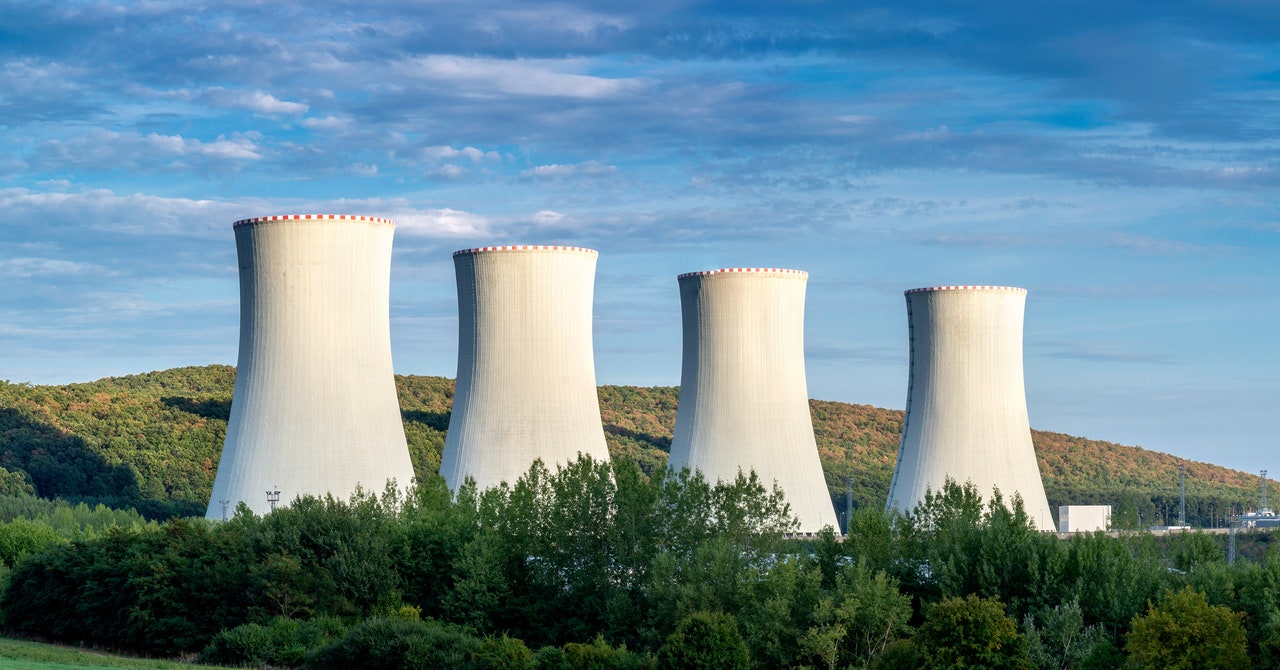A bunch of wind turbines rise from the fields on either side of the highway that runs east of Vienna. But at the border with Slovakia, which stretches between Austria and Ukraine, they stop. Slovakia only gets 0.4 percent of its energy from wind and sun. Instead, it is betting its energy transition on nuclear power.
Central to Slovakia’s nuclear strategy is the Mochovce power plant, an orange and red building flanked by eight giant cooling stacks. There used to be a village here, before the Soviet Union moved it in the 1980s to make room for the power plant. All that remains is a small boarded-up church. Cars slide in and out of the guarded security gate and the cooling chimneys spew a stream of water vapor into the air. Inside, workers are preparing a new reactor — where nuclear fission will take place — for launch in early 2023. The 471-megawatt unit, which has been the subject of controversy for years, is expected to cover 13 percent of the country’s electricity needs, making Slovakia self-reliant. -enough, according to Branislav Strýček, CEO of Slovenské Elektrárne, the company that runs the plant. Slovakia is expected to reach that milestone as its European neighbors scramble for energy supplies after cutting ties with Russia, a major exporter of natural gas.
Without Russian gas, Europe races to avoid blackouts. Every day, Paris turns off the lights of the Eiffel Tower an hour earlier, Cologne has dimmed its streetlights and Switzerland is considering a ban on electric cars. Nuclear proponents like Strýček are using this moment to argue that Europe needs nuclear technology to keep the lights on without jeopardizing the zero goals. “It provides a tremendous amount of safe, predictable, stable base load that renewables cannot provide,” he said at the World Utilities Congress in June.
The energy crisis is not a deal breaker in the European nuclear debate, but in some countries it reinforces the pro-nuclear side of the argument, says Lukas Bunsen, head of research at consultancy Aurora Energy Research. Since Russia invaded Ukraine, Germany has announced that it will keep the country’s three remaining nuclear plants open until April 2023. Belgium proposed to keep its nuclear plants running for another 10 years. In October, Poland signed a agreement with the American company Westinghouse to build its first nuclear power plant.
But Europe remains deeply divided over the use of nuclear energy. Of the 27 Member States of the European Union, 13 generate nuclear energy and 14 do not. “It’s still a very national debate,” says Bunsen. That means that public attitudes can change dramatically from one side of a border to the other. Surveys show that 60 percent of Slovaks believe nuclear power is safe, while 70 percent of their neighbors in Austria oppose its use – the country has no active nuclear power plants.
For the two neighbours, Mochovce has become a focal point in the debate on how Europe should move away from fossil fuels. For supporters in Slovakia, Mochovce’s expansion – the launch of Unit Three is expected to be followed by Unit Four two years later – shows how even a small country can become an energy heavyweight. Unit Three will make Slovakia the second largest producer of nuclear power in the EU after France. But neighboring Austrians can’t ignore what they see as the downsides: the gargantuan costs associated with building or improving aging facilities, the difficulties associated with nuclear waste disposal, and the industry’s dependence on Moscow for uranium , the fuel that powers the reactor. Last year, the EU imported a fifth of its uranium from Russia.
For years, politicians and activists in Austria also claimed that Mochovce is not safe, and local newspapers used maps to illustrate how close Mochovce is to Vienna: only 150 kilometers. “It’s a 1980s Soviet design, without proper containment,” claims Reinhard Uhrig, an antinuclear campaigner for the Austrian environmental group GLOBAL 2000. The containment is one of a series of safety systems that prevent radioactive material from entering the environment for the case of an accident. “Apart from these inherent design issues, there were major issues with the quality control of the works,” he says, describing nuclear power as a dangerous distraction from real solutions to the climate crisis.

